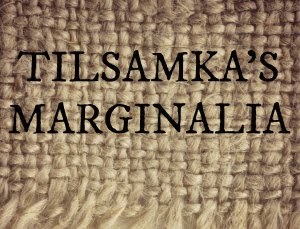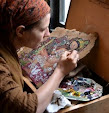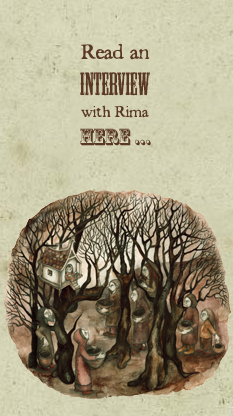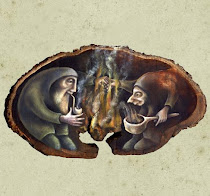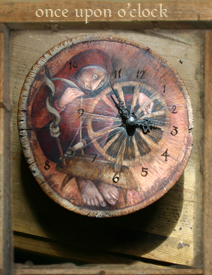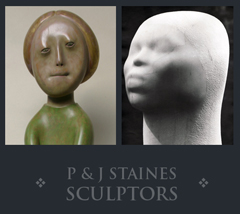THIS IS THE PATH into the woods ...
This is the path in bluebell days, when the early summer sun lay down his golden coins amid the blue ...
This is the wood, found by the path ...
This is the wood in bluebell days, where I walked and lay down my coins of dreaming in between these beauties belled blue ...

These are the trees who live in the woods ...
These are the trees in bluebell days, who spoke me an old tale gathering, and a once-upon-a-dusk-light blue ...

This is the moss that carpets the trees ...
This is the moss in bluebell days, pillowing my dreaming head, greening the floor of blue ...
These are the flowers that dance on the moss ...
These are the flowers in bluebell days, when gold and green, they sang out blue, songs of the verge and summer anew ...
This is the lamb that looked from the verge ...
This is the lamb in bluebell days, who ate the flowers and watched me pass, up the lane, into the blue ...
This is the cow, a friend of the lamb ...
This is the cow in bluebell days, no crumpled horn, but a muddy rump, who watched me pass, up the lane, into the blue ...
This is the horse, a friend of the cow ...
This is the horse in bluebell days, who stood on that hill where I first looked over, and found this home, under the blue ...


This is the foal, daughter of horse ...
This is the foal in bluebell days, who lay down to sleep while I held her hoof, and breathed in the scent of the blue ...
This is the blue, eaten by foals ...
This is the blue in bluebell days, painting my dreams a delicate haze, and holding the moor beyond in eloquent blue ...
This is the hill, and the moor beyond ...
This is the hill in bluebell days, where I came to sit and imagine a map, describing a path, over the edge of the blue ...

This is the path, into the woods ...
This is the path in bluebell days, over the edge and into the woods, the path round the hill where I laced my dreams by the blue ...
These are the woods, not found by that path ...
These are the woods in bluebell days, woods by a river, a sat-by river, edged those days in blue ...
This is the river, the river of life ...
This is the river in bluebell days, where rocks and moss and sunlight play, and water goes by to the seas beyond and I sit and sing tales to the blue ...
This is the path, into other woods ...
This is the path in bluebell days, where a green road goes with my heart and my toes, and I skip away into the blue ...
Monday, 21 June 2010
This ...
Tuesday, 1 June 2010
Les Amanz
ONCE UPON A TIME in twelfth century Brittany (and England too, in fact) lived and wrote a poet lady named Marie. Marie de France she is called, though not much is known about her. She rewrote (in a form of Anglo-Norman) Arthurian legends, Aesop's fables and her best known works are probably the Lais de Marie de France. Many moons ago when I studied languages, I read some of these in Old French, and I still have my text with faint spiders of my pencil notes in the margins.

The stories are romances often, or bawdy tales, and one of them, Lanval, is being made into a film by the wonderful Chagford Filmmaking Group. It is part of a joint Shared Legends project with the Centre de l'Imaginaire Arthurien in Brittany and there's to be an art exhibition inspired by the tale in conjunction with it, which will be held both in France and the UK later this year.
Many excellent artists will be taking part, and I seem to have snuck in amongst them!

The story of Lanval is one of love and fairyland, and honour and knighthood. And can be read here {PDF} in English, and (for the keenest linguists!) here in Old French.
I have been working for many many weeks on my two paintings for the exhibition, and they are now at long last over in Brittany making their way with all the other artwork into a book about the project, before they are hung on the walls of the castle.
These works have been a struggle for me. I'm not sure why. I began with two beautiful wooden frames given to me that seemed to suit the purpose perfectly as we were asked to do two works rather than one. And so I embarked on much larger paintings than I would've normally attempted given the constraints of time and other (frankly daunting amount of) work.
But I did it anyway, and chose for my subjects the two lovers central to the tale. Lanval himself: the good and true knight, and Tryamour: the most beautiful fairy who captures his heart. The frames were long and narrow and so seemed to suggest full figure medieval portraits to me. They stand facing each other, and I have dressed them in a version of Breton costume. Of course my romantic characters of fairyland have somehow become beclogged peasant lovers, beautiful in a human way, and more than a little melancholic!


I took inspiration from the indescribable skill of Rogier Van Der Weyden, Netherlandish master of the emotional medieval portrait. (To be honest, looking through books of his work makes you simultaneously glory in its sheer brilliance and want to give up altogether!)


I soldiered on, with time running out, and a large area of hardboard to cover with oil paint.
The figures stand on rhyming couplets of Old French from the original story:




I had also planned involved scenes charting the story under the words too, but at a certain point in the process I realised I'd have to curb my ambitious and unrealistic plans and keep it much more simple.

The backgrounds I painted blood red in preparation for the gold wax that was to cover it. And the clothing was simple white and red and black. And I stained the wooden frames dark oak with a bit of black boot polish to finish.

Gold dust was in the air for days while I applied the gold wax. I had golden fingers and found smudges of gold all over the place...


And my deadline was overshot by a fair few days... I had become rather stretched out with all my work and had got to that point where you can no longer see what you've done.
But it had to be sent off anyway, and I hope that by the time the exhibition comes round I might have forgotten what my paintings look like and be pleasantly surprised after a helpful hiatus from them! (If not, I shall be hanging my head in shame amid such salubrious artistic company!)
Even my rushed photos of the work are dreadful - I do apologise! The day was sunnier than sunny outside and so glared on the gold, and inside I tried to hang the paintings on my old wooden walls, but couldn't get back far enough to capture the whole works. The photos taken with flash obliterated half of my detail, and, oh! - what an all round frustration!
What I would have done with more time!
We all have our days of creative work-doubt I suppose. And this was brought on for me by having too much to do in too little time. I have learnt from this that breaks and escapes up the hills and into the forests need to be part of my working practice, not postponed until completion! I have breathed sighs of relief amid the green since these works were collected by the courier, and my creative eyes are refreshed anew for the next works.
These pieces are titled Les Amanz ~ which means The Lovers in Old French.
Soon I shall show you summer beginning, bluebells perhaps, new creations and.. well.. who knows what else!
I leave you with the last lines of Marie de France's Lanval:

The stories are romances often, or bawdy tales, and one of them, Lanval, is being made into a film by the wonderful Chagford Filmmaking Group. It is part of a joint Shared Legends project with the Centre de l'Imaginaire Arthurien in Brittany and there's to be an art exhibition inspired by the tale in conjunction with it, which will be held both in France and the UK later this year.
Many excellent artists will be taking part, and I seem to have snuck in amongst them!

The story of Lanval is one of love and fairyland, and honour and knighthood. And can be read here {PDF} in English, and (for the keenest linguists!) here in Old French.
I have been working for many many weeks on my two paintings for the exhibition, and they are now at long last over in Brittany making their way with all the other artwork into a book about the project, before they are hung on the walls of the castle.
These works have been a struggle for me. I'm not sure why. I began with two beautiful wooden frames given to me that seemed to suit the purpose perfectly as we were asked to do two works rather than one. And so I embarked on much larger paintings than I would've normally attempted given the constraints of time and other (frankly daunting amount of) work.
But I did it anyway, and chose for my subjects the two lovers central to the tale. Lanval himself: the good and true knight, and Tryamour: the most beautiful fairy who captures his heart. The frames were long and narrow and so seemed to suggest full figure medieval portraits to me. They stand facing each other, and I have dressed them in a version of Breton costume. Of course my romantic characters of fairyland have somehow become beclogged peasant lovers, beautiful in a human way, and more than a little melancholic!


(above: Tryamour and Lanval close-ups finished)


(above: Tryamour in progress, with Rogier Van der Weyden & Domenico Ghirlandaio inspiration)
I soldiered on, with time running out, and a large area of hardboard to cover with oil paint.
The figures stand on rhyming couplets of Old French from the original story:
Fais fu d'un mult gentil vassal;
en Bretanz l'apelent Lanval
{Old French}
et dont le héros, un noble chevalier,
a pour nom Lanval en breton.
{Modern French}
It tells of a very nice nobleman,
And it's called Lanval in Breton
{English}
en Bretanz l'apelent Lanval
{Old French}
et dont le héros, un noble chevalier,
a pour nom Lanval en breton.
{Modern French}
It tells of a very nice nobleman,
And it's called Lanval in Breton
{English}


(above: Lanval finished)
tut a cheval une pucele;
en tut le siecle n'ot si bele.
{Old French}
une jeune fille à cheval,
la plus belle du monde.
{Modern French}
all on horseback rode a young maiden,
in the whole century there was none so beautiful.
{my English translation}
en tut le siecle n'ot si bele.
{Old French}
une jeune fille à cheval,
la plus belle du monde.
{Modern French}
all on horseback rode a young maiden,
in the whole century there was none so beautiful.
{my English translation}


(above: Tryamour finished)
I had also planned involved scenes charting the story under the words too, but at a certain point in the process I realised I'd have to curb my ambitious and unrealistic plans and keep it much more simple.

The backgrounds I painted blood red in preparation for the gold wax that was to cover it. And the clothing was simple white and red and black. And I stained the wooden frames dark oak with a bit of black boot polish to finish.

Gold dust was in the air for days while I applied the gold wax. I had golden fingers and found smudges of gold all over the place...


And my deadline was overshot by a fair few days... I had become rather stretched out with all my work and had got to that point where you can no longer see what you've done.
But it had to be sent off anyway, and I hope that by the time the exhibition comes round I might have forgotten what my paintings look like and be pleasantly surprised after a helpful hiatus from them! (If not, I shall be hanging my head in shame amid such salubrious artistic company!)
Even my rushed photos of the work are dreadful - I do apologise! The day was sunnier than sunny outside and so glared on the gold, and inside I tried to hang the paintings on my old wooden walls, but couldn't get back far enough to capture the whole works. The photos taken with flash obliterated half of my detail, and, oh! - what an all round frustration!
What I would have done with more time!
We all have our days of creative work-doubt I suppose. And this was brought on for me by having too much to do in too little time. I have learnt from this that breaks and escapes up the hills and into the forests need to be part of my working practice, not postponed until completion! I have breathed sighs of relief amid the green since these works were collected by the courier, and my creative eyes are refreshed anew for the next works.
These pieces are titled Les Amanz ~ which means The Lovers in Old French.
Soon I shall show you summer beginning, bluebells perhaps, new creations and.. well.. who knows what else!
I leave you with the last lines of Marie de France's Lanval:
With her he's gone to Avalon -
Or so say the poets in Breton -
To the fair island far away
She ravished that noble youth;
No-one can say any more with truth,
And I have no more to tell of this lay.
Or so say the poets in Breton -
To the fair island far away
She ravished that noble youth;
No-one can say any more with truth,
And I have no more to tell of this lay.
Written by
Rima Staines
at
7:31 pm
87
words from others
![]()
Tags: arthurian legend, breton, exhibition, lais de marie de france, lanval, oil painting
Subscribe to:
Posts (Atom)






